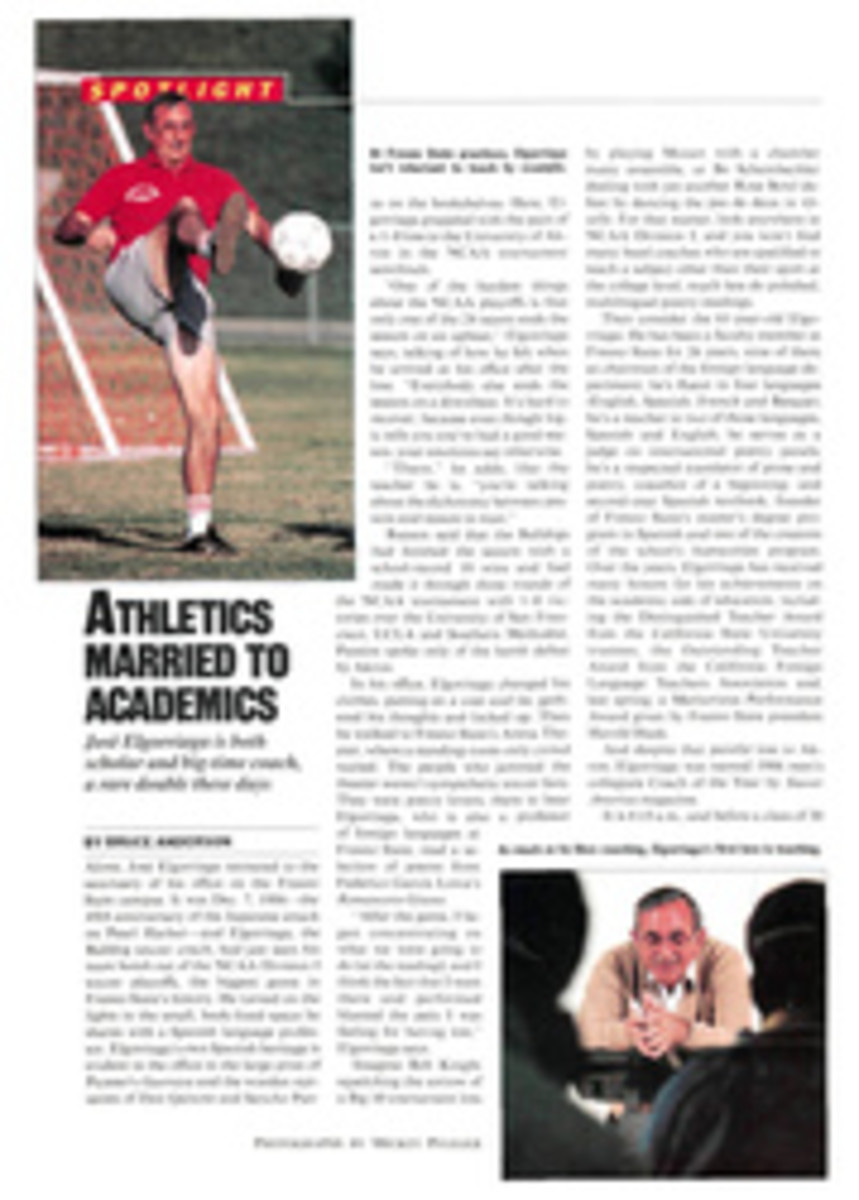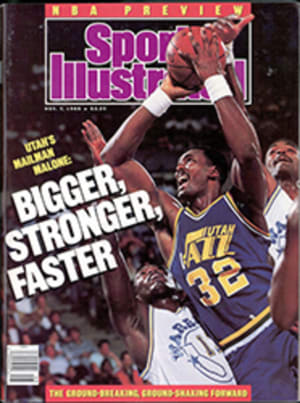
UGH! THOSE UNSIGHTLY LINES
A friend of mine, a woman who's a lawyer, asked the big question on a Monday morning after a day of watching the NFL on TV: Why can't they make uniforms so that Lawrence Taylor's underwear doesn't show through his pants?
I had often wondered that myself. When an NFL equipment man told me he had thought about it, too, I figured all of America wanted to know but didn't know who to ask. I mean, there they were, week after week, bunches of football players wearing snowy-white spandex pants, derrieres up toward the camera, jockstraps shining through. The degree of jockstrap visibility is directly related to skin color. It's a simple fact of life that among the New York Giants, for example, Phil Simms's jock doesn't show up as prominently as Taylor's. So why doesn't anybody make jocks in a wide variety of flesh colors?
At Royal Textile Mills in Yanceyville, N.C., Chip Atwater explains that his company makes only white athletic supporters "in part for sanitary reasons. We're talking about the area of the body least likely to dry out." Atwater adds that "our lab work has shown that the microorganisms that cause jock itch can hide out in the dye of some yarns.
"But mostly it's an economic consideration. Running only one color through the mill is most cost effective, and that color has always been white. A few years back we tried to come out with kind of an athletic brief, a cross between a jockstrap and a bikini. We made it in skin tone—I guess it was only Caucasian skin tone, though—and in red and black. The briefs never sold well anywhere but San Francisco."
Down at Bike Athletic Co., in Knoxville, Tenn., vice-president of sales and marketing and jockstrap spokesman Randy Black says, "We could run 'em in any color, if the demand were there. We've run a lot of printed jockstraps, ones that say, for instance, CLEMSON TIGERS, but the cost is higher. We run white just because it makes good business sense, and there's a lot of pressure on the athletic-supporter industry right now."
Say what? "Well, a couple of things are happening. First, they cut athletic supporters out of school budgets. Second, the divorce rate in the country has caused a bit of a sales slump. You've got a lot of kids out there being raised without fathers around. If these kids don't get the supporters at school, and their moms don't know about them, they're just going to substitute some tight underwear for support. Physically, it's just not as good." Even so, about nine million athletic supporters were sold in the U.S. last year.
Bike Athletic's founder, Charlie Bennett, invented the athletic supporter in Boston back in the late 1800s. "Guys were riding those bikes with one big wheel and one little wheel," says Black. "When they got bouncing over the cobblestone streets, uh, well, the need for support was born. The name Bike comes from bike."
While this tiny garment has most always been white, Atwater notes that one NFL team did have black jocks for a while. "I think they threw their jocks into the laundry with their socks—their socks are black, and then the jocks were, too," he says. "But it was another NFL team that had the most trouble with jocks. They sent them back because they were turning blue-green. Turns out they had some kind of copper in the water that was oxidizing in the jocks."
Black says that a minirevolution is occurring in football underwear, that some players are finally camouflaging those telltale jockstrap lines. "More and more players are wearing girdles over their jocks," he says. "It sounds kind of funny. Women today don't wear girdles much, but more and more men do. The guys are very excited about them. A few years ago, we came out with a girdle that will hold football pads. It protects the groin, the hams—you might have seen pictures recently of football and basketball players with their girdles hanging out."
I guess I would just as soon look at Lawrence Taylor's jock.

